The Ultimate Guide to Peaches, Plums, and Nectarines
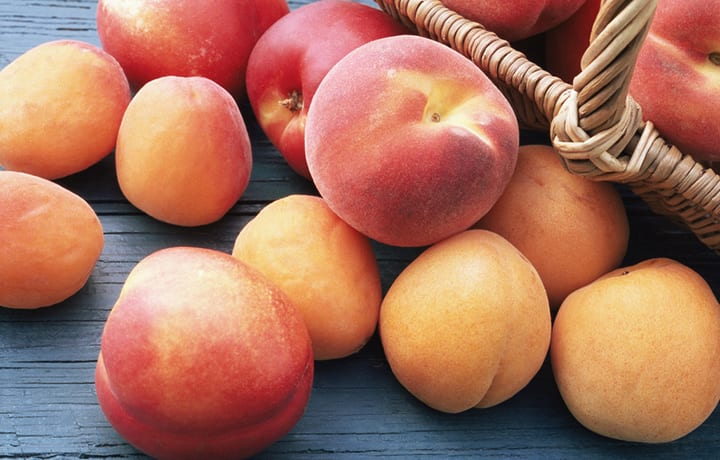
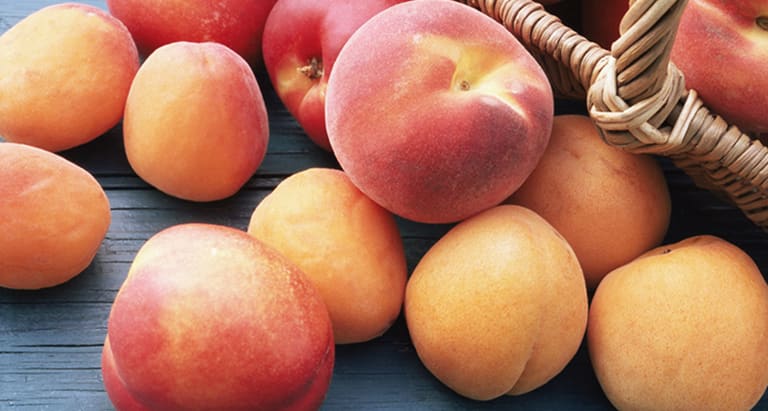
Peaches, nectarines, and plums may well be the pinnacle of summer fruit: sweet, juicy and utterly irresistible. They're all “stone fruits”— that is, these fruits have sweet flesh surrounding a hard, rather large pit (or “stone”). Here’s how to get the best of the season’s stone fruits.
Choosing the best peaches and nectarines
Nectarines and peaches are directly related. Think of the latter as the fuzzier cousin to the former. Here's how to choose the best when shopping.
- Know the lingo: Peaches and nectarines fall into one of two categories: "cling" or "free-stone." With free-stone fruit, the flesh comes free from the pit more easily. Free-stone fruits tend to be sturdier and better for sautéing, grilling, and pickling. Cling fruit—with flesh that adheres more stubbornly to the pit—is often sweeter and thus tends to be more popular. (That said, super-sweet varietals of free-stone peaches do exist.) Cling peaches have a softer and more luxurious texture, making them a great (if messy) choice for pies, jams, cobblers, and crisps.
- Examine the flesh: There are white- and yellow-fleshed versions, though most have yellow to pale orange flesh with splotches of red or pink. Yellow-fleshed fruits are usually quite juicy and very fragrant. White-fleshed fruits are less acidic and thus sweeter. White-fleshed peaches also bruise easily; transporting them can be difficult, a problem reflected in their higher price.
- Give them a sniff: If peaches and nectarines don't smell sweet and aromatic, they probably won't taste sweet and aromatic once you take them home.
- Notice the color: The red blush of a peach or nectarine doesn't tell you if the fruit is ripe. Look at the background color. It should be uniform, either golden or pale cream, with absolutely no green blush or tinge.
- Try a gentle squeeze: Yellow-fleshed peaches and nectarines should be soft but not mushy in any way. White-fleshed peaches and nectarines can be firmer because the sugar content is higher.
Choosing the best plums
Although there are fewer specific varieties of plums than of peaches and nectarines, there’s more diversity among the varieties: from extremely sweet to moderately tart; from soft-fleshed to quite firm, from round to tapered ovals, from red to yellow to blue to black and all the colors in-between. Here are the two main categories of plums:
European-style plums
- Free-stone
- Always blue or purple
- Small and firm
- Less juice but more natural sugar
- Often dried into prunes
Japanese-style plums
- Clings (the flesh sticks to the pits)
- Skin: light yellow to blackish red
- Fairly spherical
- Very juicy
- Best for eating or canning
Plums should be firm (not hard) with a little give but no soft spots. The skin itself should be smooth and firm, never wrinkled (indicating the fruit has passed its prime).
Ripening stone fruit at home
Once a fruit is harvested, it can only ripen so much. A peach or nectarine that is rock-hard or green will never ripen at home. Avoid these unless you intend to make spiced or pickled peaches. Plums should also be selected and eaten at the peak of freshness.
For plums, peaches, or nectarines that are nearly ripe and just need an extra nudge, try sealing them in a bag with a banana or an apple for a day or two at room temperature. The banana or apple gives off ethylene, a gas that aids in ripening stone fruits. The stone fruits will get softer and juicier.
Guide to varieties of peaches, nectarines, and plums
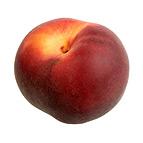 | Earlihale Peaches These medium-sized, yellow-fleshed, free-stone peaches have a dark-red skin and a very mellow flavor. They’re firm, not quite as juicy as some other varietals, and thus best in pies and crisps. |
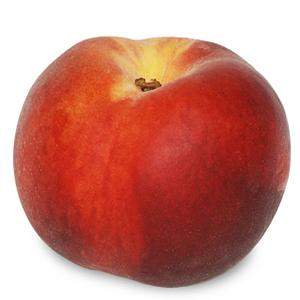 | Red Globe Peaches These are big, yellow-fleshed peaches. They have a reddish skin and are prized for their super-sweet, strong flavor. Free-stone and firm, these are one of the consummate “eating peaches.” They're so good, they probably won’t make it home from the market — but if they do, they're also good for freezing and canning. |
 | Melba Peaches Look for these at farmers’ markets in mid-summer, particularly in the American South and Southwest. They’re free-stone, super-sweet white peaches with pale yellow skins. They taste amazingly like honey! No need to cook with them — just enjoy them the moment they’re ripe. |
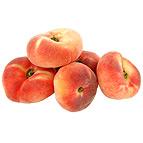 | Donut Peaches These Chinese varietals look like little flattened disks, sort of like puffy donuts. They’re prized for their delicate perfume, are low in acid, either yellow- or white-fleshed, quite creamy and quite sweet — and quite expensive. |
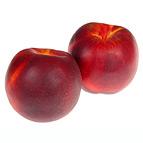 | Fantasia Nectarines These large, oval nectarines have a deeply mottled, red skin against a yellow background. The flesh is yellow and firm — and free-stone, to boot. Because of Fantasia's perfect balance of juiciness and firmness, these are a go-to nectarine variety: good for canning, baking, sautéing, grilling and just eating out of your hand. |
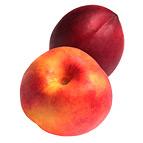 | Arctic Nectarines There are three varieties of these white-fleshed nectarines: Arctic Jay, Arctic Rose and Arctic Star. The differences have to do with their skin-color, which ranges from pale yellow with a red blush to bright red. They are low-acid, sweet nectarines, prized for their delicate perfume. Try them with some sliced prosciutto crudo or alongside some grilled turkey sausages. |
 | Damson Plums These European-style plums have been around since the Roman Empire. They have blue-purple skin with a creamy yellow flesh. They’re great for cooking: tossed into curries, poached in red wine and baked into pies or cakes. Dried as prunes, they're best in stews and casseroles, and a little bit of sweetness to a rich, aromatic sauce. |
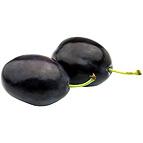 | Italian Prune Plums These purple, free-stone, egg- to tear-drop-shaped, European-style plums turn almost black as they ripen — and the flesh gets pretty brown, too. They’re not juicy, so the flavor is quite concentrated, a good foil to many cheeses, even strong ones. Dried as prunes, they're best in stews and casseroles. |
 | Santa Rosa Plums These oxblood-red, Japanese-style plums have a yellow flesh that’s stocked with honey, citrus and vanilla notes. Very sweet and juicy, they are best eaten raw: out of the hand, sliced into salads or blended into smoothies. |
 | Early Golden Plums These Japanese-style, round, large plums have yellow-golden flesh and skins (sometimes with a slight red blush). They’re quite juicy but also have a little acidic pop along the skin — that sweet/sour contrast has recently made them a farmers’ market favorite. Despite being called “early,” they come into season in late July. |
 | Greengage Plums These are small, green to yellow, Japanese-style plums. They're somewhat sweet, with a little sour bite, and quite juicy when ripe. They’re a favorite for pies and cobblers but are also a good substitute for tomatoes in composed salads and spicy salsas. |
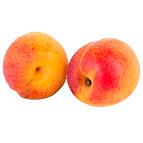 | Plumcots These are a 50/50 cross between plums and apricots. They have smooth skins and just the faint perfume of an apricot. |
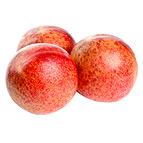 | Pluots These are another cross between plums and apricots. In general, they are about 70% plum and 30% apricot. They have a very high sugar content. The most common on the market are the so-called “dinosaur egg pluots” with mostly green, red-streaked skins and a pale red flesh. |
 | Apriums This third plum-and-apricot hybrid is actually more apricot (70%) than plum (30%). They have a little bit of fuzz like apricots, a ridiculously gorgeous aroma, and a very mild, sweet taste, sort of like a juicier version of an apricot. |